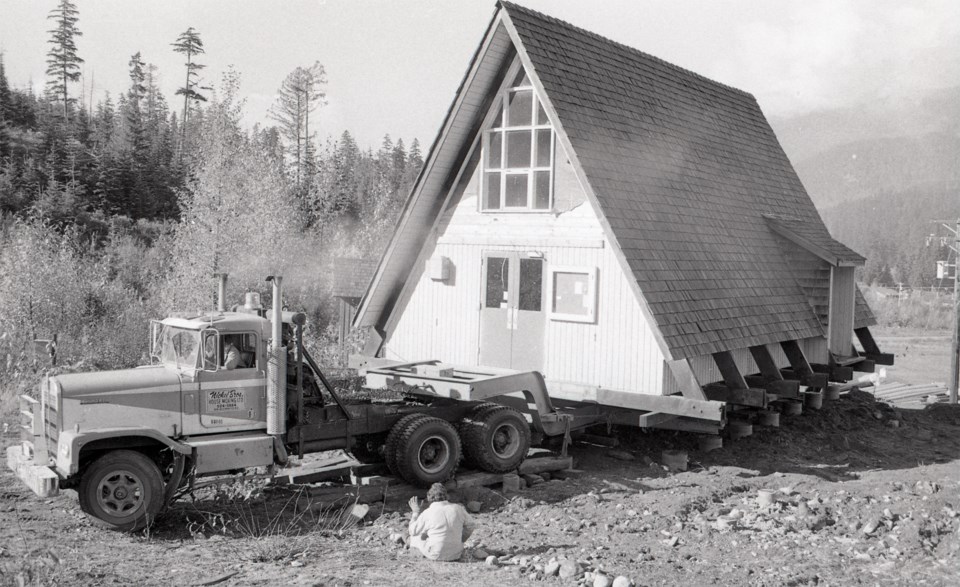The Whistler Skiers’ Chapel was one of the most iconic buildings from the early development of Whistler as a ski resort. Remembered for its distinctive A-frame design, the church was one of the first skier chapels in Canada, as well as one of the country’s first interdenominational churches.
From its inception, the chapel was designed with the surrounding ski culture in mind. A parcel of land was set aside by Franz Wilhelmsen, president of Garibaldi Lifts Ltd., in order to build a small skiers’ chapel. Wilhelmsen had fond memories of skiers’ chapels in the alpine villages of his home country of Norway, and hoped for something similar in Whistler. Likewise, the chapel’s status as an interdenominational congregation was envisioned at the outset. Marion Sutherland and Joan Maclean, who formed the original board of trustees and established the fundraising committee in 1966, ascribed to different denominations of the Christian faith; Sutherland was a Protestant, and Maclean belonged to the Roman Catholic Church.
Fundraising began in 1966 with Sutherland and Maclean seeking support from local faith communities, approaching both the Vancouver Council of Churches and the Kamloops diocese, both of which agreed to support the effort by supplying ministers. Architect Asbjorn Gathe contributed by donating plans for the chapel’s design: a simple A-frame, the layout left intentionally devoid of specific denominational features. A stained-glass window designed by Donald Babcock was donated by the Southam family. Support also came from local ski culture. Warren Miller, colloquially referred to as the “dean of ski cinematographers,” held a benefit screening of his film Ski on the Wild Side, and donated a portion of the proceeds to the construction of the chapel.
The $15,000 needed was swiftly raised, and the chapel’s construction was completed in December, the first service being held on Christmas Eve, 1966. The dedication ceremony included representatives from the Lutheran, United, Anglican, and Jewish faiths. As Whistler expanded over the years, the chapel also grew and changed. It held regular services for many denominations, ranging from Catholic to Seventh-day Adventist. It also became a de-facto community centre, as local groups such as Alcoholics Anonymous and community health services utilized the space.
The growth of Whistler and the chapel’s evolving role exposed the physical limitations of the A-frame building, forcing some groups such as the Whistler Community Church to split up services. Additionally, as the Creekside location developed, the chapel was forced to relocate multiple times, and was finally given the option to move to the new Village Centre. However, the projected moving cost of $10,000 and the growing spatial limitations prompted the Skiers’ Chapel Society to launch a fundraising campaign for a new building in 1989.
The vision for what the new chapel would be had changed by 1991, becoming more ambitious, with the hope of constructing a building that could fulfil the needs of both secular and faith communities in Whistler. The committee also exchanged its plot of land in Village Centre for one in Village North in 1996.
The fundraising process was further complicated when both the Catholic Church and the Whistler Community Church, two of the chapel’s largest congregations, pulled out to pursue their own buildings. At this point, it became apparent that financial support for a Christian community centre on a large scale was lacking. The committee adapted, and eventually moved services to Millennium Place (now called the Maury Young Arts Centre), in 2003. The last service held in the original skiers’ chapel was on Easter of 2000.



